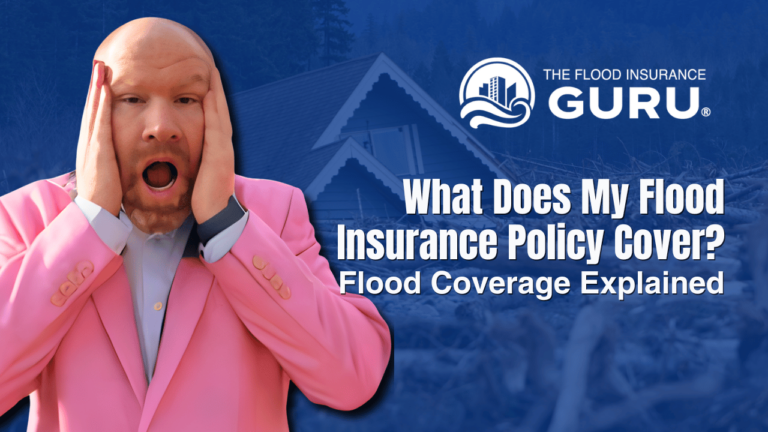Understanding Severe Repetitive Loss Properties and NFIP Essentials
5 Shocking Truths About Severe Repetitive Loss Properties and the National Flood Insurance Program
If you own a property in a flood-prone area or are considering buying one, understanding how the National Flood Insurance Program (NFIP) impacts severe repetitive loss (SRL) properties is crucial. These properties come with unique challenges that affect insurance premiums, eligibility, and even the ability to sell or insure the home. In this comprehensive guide, we’ll dive deep into the most frequently asked questions about SRL properties and reveal some truths banks and insurers might not readily share.
My name is Chris Greene, also known as the Flood Insurance Guru, and I’ve spent over a decade helping homeowners navigate the complexities of flood insurance. I’ve seen firsthand how misinformation can lead to costly surprises, which is why I’m breaking down everything you need to know about severe repetitive loss properties and the National Flood Insurance Program.
What Is a Severe Repetitive Loss (SRL) Property?
Before we get into the nitty-gritty, it’s important to understand what qualifies a property as a severe repetitive loss property. Essentially, an SRL property is a building that has experienced multiple flood losses over time, typically triggering repeated insurance claims. The NFIP defines SRL properties as those that have had at least four flood insurance claims over a 10-year period, with the cumulative amount exceeding a specific threshold.
These properties are flagged because they represent a significant financial risk to the NFIP, which is a federally backed program designed to provide flood insurance to homeowners in flood zones. When a property is labeled as SRL, it often means higher insurance premiums, stricter underwriting standards, and sometimes limited coverage options.
Can You Get Removed from Being an SRL Property?
One of the most commonly asked questions is whether a property can be removed from the SRL designation. The answer is yes — but only under certain conditions. Removing a property from the SRL list generally requires:
- Successful mitigation efforts that significantly reduce flood risk, such as elevating the home or floodproofing.
- No flood claims filed on the property for at least 10 years.
- Collaboration with your local community to implement flood risk reduction strategies.
Mitigation is key here. By investing in flood mitigation measures, homeowners can demonstrate to the NFIP that their property’s flood risk has been reduced, which may qualify them for removal from the SRL list. This not only helps lower premiums but can also improve resale value and make the property more attractive to buyers and lenders.
Is Private Flood Insurance an Option for SRL Properties?
Many homeowners wonder if they can bypass the National Flood Insurance Program by opting for private flood insurance. Unfortunately, for SRL properties, this is typically not an option. Most private insurers are hesitant to cover these high-risk homes unless the property has gone claim-free for at least 5 to 10 years, with some exceptions.
Even then, the chances of securing private flood insurance for an SRL property are less than 20%, unless you can provide strong evidence that your flood risk profile has changed significantly. For example, if you’ve completed major mitigation projects or if local flood risk maps have been updated to reflect a lower risk, private insurers may reconsider.
It’s important to note that private flood insurance markets vary by state and region, so it’s worth consulting with a knowledgeable insurance agent who specializes in flood coverage to explore your options.
Can You Sell a Severe Repetitive Loss Property?
Yes, you can absolutely sell a property that has been designated as severe repetitive loss. There is no law preventing the sale of these homes. However, there are some important considerations to keep in mind:
- Buyers will likely face higher flood insurance premiums due to the property’s risk profile.
- If the buyer is obtaining a mortgage, the lender will require flood insurance coverage, often through the NFIP.
- Disclosure laws in many states require sellers to inform buyers about the property’s flood history and SRL status.
Because of these factors, SRL properties can be a red flag for real estate transactions. Buyers and lenders may be wary, and the property could take longer to sell or sell at a lower price compared to similar homes without flood loss history.
Is It Possible to Transfer Your NFIP Flood Insurance Policy to a New Buyer?
Another frequent question is whether flood insurance policies can be transferred when selling a home. The good news is that, in many cases, you can transfer your National Flood Insurance Program policy to the new owner, which can simplify the process and potentially preserve some coverage benefits.
To transfer your NFIP policy, you typically need to:
- Get signatures from both the seller and the buyer.
- Submit the transfer application to NFIP Direct.
- Ensure the buyer understands the terms and coverage limits of the existing policy.
Keep in mind that transferring the policy does not guarantee the same premium rates for the new owner. Premiums are based on flood risk factors and property value at the time of transfer, so the new owner’s costs may differ.
Will Flood Insurance Always Be Expensive for SRL Properties?
One of the most pressing concerns for homeowners with SRL properties is whether they will be stuck paying high flood insurance premiums indefinitely. The answer depends largely on the ongoing flood risk to the property.
The National Flood Insurance Program calculates premiums based on several factors, including:
- Flood risk and frequency (not just the flood zone designation itself).
- Distance to the nearest water source.
- The type of flooding the property is prone to.
- The replacement cost value of the home.
If your property continues to be at high risk for flooding, premiums will likely remain elevated. However, if you invest in mitigation efforts, improve the property’s resilience, or if flood risk maps are updated to reflect reduced risk, your premiums could decrease over time.
It’s also important to note that flood insurance policies under the NFIP are only available through agents appointed with NFIP Direct. Not all insurance agents or companies are authorized to write these policies. Therefore, working with an agent appointed with NFIP Direct ensures you have access to the program and its benefits without unnecessary delays.
Why Working with NFIP Direct Appointed Agents Matters
The National Flood Insurance Program is a specialized insurance program that requires agents to be officially appointed with NFIP Direct to sell policies. Many insurance providers who have “write your own” (WYO) agreements with the NFIP do not offer coverage for SRL properties or may not handle the process efficiently.
By choosing an agent appointed with NFIP Direct, you ensure:
- Access to the full range of NFIP flood insurance products.
- Expert guidance tailored to properties with complex flood histories.
- A streamlined application and claims process.
This can save you time and frustration, particularly when dealing with severe repetitive loss properties where the stakes are higher and the requirements more stringent.
Frequently Asked Questions (FAQ)
1. What exactly qualifies a property as severe repetitive loss?
A property is considered severe repetitive loss if it has had multiple flood insurance claims (usually four or more) over a 10-year period, with the total claims exceeding a certain dollar threshold as defined by the NFIP.
2. Can I reduce my flood insurance premiums by elevating my home or other mitigation efforts?
Yes, mitigation efforts like elevating your home, installing flood vents, or floodproofing can reduce your flood risk, which may help lower your premiums and potentially remove your property from the SRL list if you remain claim-free for 10 years.
3. Is private flood insurance a viable alternative for SRL properties?
Private flood insurance is generally difficult to obtain for SRL properties unless the property has been claim-free for 5 to 10 years and can demonstrate reduced flood risk. Otherwise, the NFIP remains the primary option.
4. What happens if I sell my SRL property?
You can sell your property, but buyers should be aware that flood insurance premiums will likely be higher, and lenders will require flood insurance if there is a mortgage. Disclosure rules may also apply.
5. Can I transfer my NFIP flood insurance policy to the new owner?
Yes, policy transfer is possible by submitting the appropriate paperwork with signatures from both parties to NFIP Direct. However, premium rates may change based on current risk assessments.
6. Why are some insurance agents unable to sell NFIP flood insurance?
Only agents appointed with NFIP Direct are authorized to sell NFIP flood insurance. Agents without this appointment cannot offer these policies, so it’s important to verify your agent’s credentials.
Conclusion
Severe repetitive loss properties represent a unique challenge within the National Flood Insurance Program. Understanding how these properties are classified, the implications for insurance premiums, and your options for mitigation or sale can empower you to make informed decisions.
While SRL properties often come with higher costs and stricter insurance requirements, there are pathways to reduce risk and potentially lower premiums over time. Working with an experienced, NFIP Direct-appointed insurance agent is essential to navigating this process smoothly.
If you own or are considering purchasing a property with a history of flood losses, take the time to educate yourself on the nuances of the National Flood Insurance Program. With the right knowledge and support, you can protect your investment and your family from the financial impacts of flooding.
Remember, flood insurance isn’t just a policy—it’s peace of mind in the face of unpredictable natural disasters.

Information contained on this page is provided by an independent third-party content provider. This website make no warranties or representations in connection therewith. If you are affiliated with this page and would like it removed please contact editor @producerpress.com






